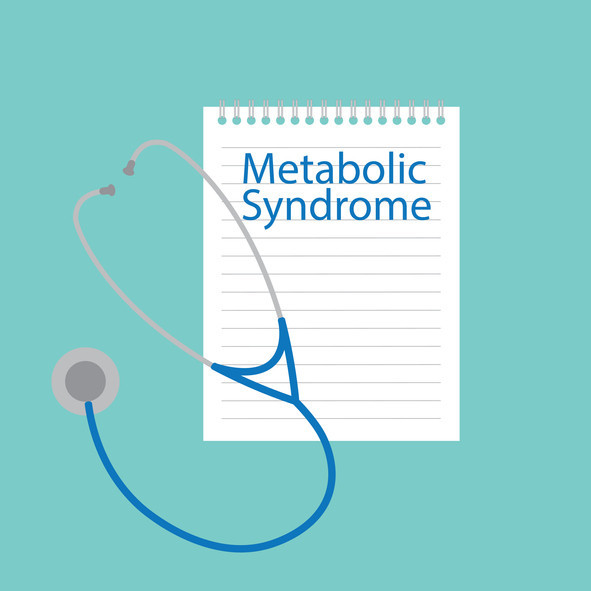Metabolic syndrome is on the rise: What it is and why it matters

Metabolic syndrome may be the most common and serious condition you've never heard of. (At least that's what I found out when I asked friends and relatives about it.) Worse, a study published in JAMA shows that it's on the rise.
Let's start with the name, according to Merriam-Webster:
Metabolic: Relating to the chemical changes in living cells by which energy is provided for vital processes and activities and new material is assimilated.
Syndrome: A group of signs and symptoms that occur together and characterize a particular abnormality or condition.
So now you know what metabolic syndrome is, right? Perhaps not. Just knowing what the words in its name mean doesn't help much in this case.
Metabolic syndrome defined
According to the most widely accepted definition, a person has metabolic syndrome when at least three of the following are present:
- Increased waist size (for example, greater than 40 inches in men or 35 inches in women, though definitions vary by ethnic group)
- Elevated blood triglycerides (a type of fat in the blood): Above 149 mg/dL
- Low HDL (good) cholesterol: Below 40 mg/dL in men or 50 mg/dL in women or receiving treatment for low HDL
- High blood pressure: 130 mmHg or above (systolic pressure), or 85 mmHg or above (diastolic pressure), or previously diagnosed hypertension requiring treatment
- Elevated blood sugar: A fasting plasma glucose level of 100 mg/dL or above, a previous diagnosis of type 2 diabetes, or taking diabetes medications.
Does metabolic syndrome cause symptoms?
As you might guess from how the metabolic syndrome is defined, it has no specific symptoms. So, the only way you would know you have it is to have measures of your waist size, blood lipids, blood pressure, and blood sugar.
Why having metabolic syndrome matters
While each component of metabolic syndrome can cause health problems on its own, a combination of them powerfully increases the risk of having
- cardiovascular disease (including heart attacks and stroke)
- diabetes
- liver and kidney disease
- sleep apnea.
And this only a partial list. It's likely we'll learn about other health risks associated with metabolic syndrome in the future.
Metabolic syndrome is on the rise
The study published in the medical journal JAMA explored how common metabolic syndrome is and who is getting it. Researchers analyzed survey data from more than 17,000 people who were representative of the US population in gender, race, and ethnicity. While the overall prevalence of metabolic syndrome increased slightly between 2011 and 2016 — going from 32.5% to 36.9% — it increased significantly among
- women (from 31.7% to 36.6%)
- adults ages 20 to 39 (from 16.2% to 21.3%)
- Asian (from 19.9% to 26.2%) and Hispanic (from 32.9% to 40.4%) adults.
Rates of metabolic syndrome were similar among men and women, but increased with age (from about one in five in young adults to nearly half of all people over 60). Among Hispanic adults 60 and over, nearly 60% had metabolic syndrome.
Perhaps these findings should not be surprising given the connection between obesity and metabolic syndrome, and the well-documented epidemic of obesity in this country. Still, it is particularly worrisome that metabolic syndrome is rising so fast among certain ethnic groups and young adults, and there is currently little reason to think these trends won't continue in the near future.
Health disparities in metabolic syndrome
The finding that metabolic syndrome is more common among certain ethnic groups reveals significant health disparities. Health disparities such as genetic, social, environmental, and occupational factors probably play a role in why metabolic syndrome affects, or is rising in, some groups more than others. These disparities are important in the context of long-term health consequences. This is an area of active (and much-needed) research.
What's to be done about metabolic syndrome?
The biggest priority now regarding metabolic syndrome is prevention. Healthy habits can have a big impact on maintaining a healthy weight and normal blood sugar, lipid levels, and blood pressure. Once present, metabolic syndrome can be treated with loss of excess weight, improved diet (such as the Mediterranean diet or the DASH diet), and, when necessary, with medications (including those that can improve blood lipids, promote weight loss, or lower blood pressure or blood sugar).
The bottom line
Metabolic syndrome is an important risk factor for some of the most common and deadly conditions, including cardiovascular disease and diabetes. We need to figure out how to prevent and treat it more effectively, particularly because it appears to be on the rise. A good starting point is to pay more attention to risk factors such as excess weight, lack of exercise, and an unhealthy diet.
Now you know what metabolic syndrome is. Considering that about one in three people in the US has this condition, it's likely someone close to you has it. Talk to your doctor about whether that "someone" is you.
Follow me on Twitter @RobShmerling
About the Author

Robert H. Shmerling, MD, Senior Faculty Editor, Harvard Health Publishing; Editorial Advisory Board Member, Harvard Health Publishing
Disclaimer:
As a service to our readers, Harvard Health Publishing provides access to our library of archived content. Please note the date of last review or update on all articles.
No content on this site, regardless of date, should ever be used as a substitute for direct medical advice from your doctor or other qualified clinician.













